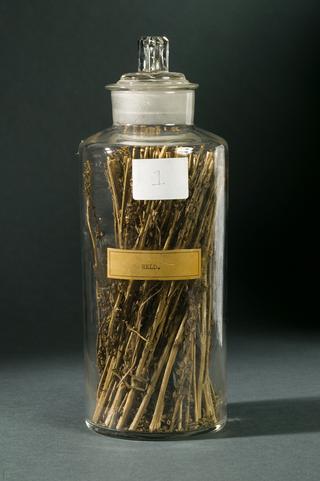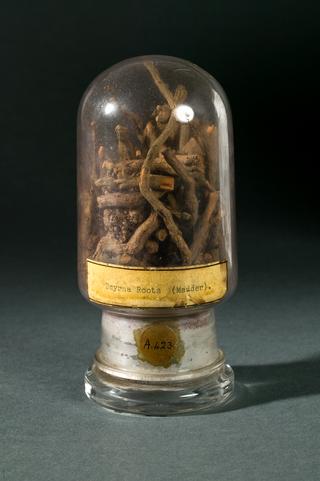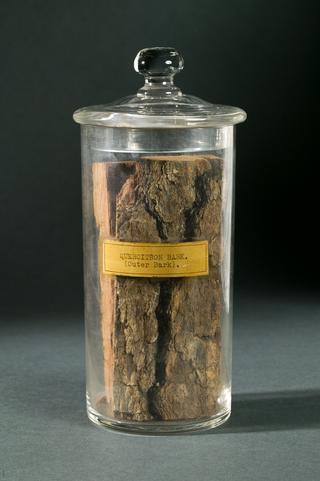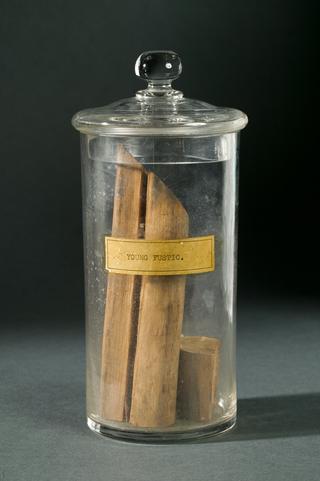
Mauveine acetate dye in microcrystalline form in a cork-stoppered glass bottle
- preparer:
- William Henry Perkin








Mauveine acetate dye in microcrystalline form in a cork-stoppered glass bottle labelled: 'Original Mauveine Prepared by Sir William Perkin in 1856', actually prepared by Sir William Henry Perkin, England, 1906. The label is ambiguous. It could mean that the sample was prepared by the same method as the original dye in 1856. As crystalline mauveine acetate, it could not have been prepared before 1862 and chemical analysis suggests that it is identical to the contents of a similar bottle at Columbia University, New York, and hence probably prepared for the mauve anniversary celebrations in 1906.
Details
- Category:
- Industrial Chemistry
- Object Number:
- 1952-175
- Materials:
- glass, paper (fibre product) and cork
- type:
- dye
- credit:
- Imperial College of Science & Technology




